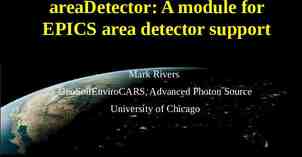Intelligence Community and Classified Information
22 Slides941.00 KB

Intelligence Community and Classified Information

Intelligence and Information Information is data – Gathered through a variety of means Intelligence is the result of analyzing information Intelligence can be public (open source) or classified Separate from policy

US Intelligence Community The IC is a federation of executive branch agencies and organizations that work separately and together to conduct intelligence activities necessary for the conduct of foreign relations and the protection of the national security of the United States. These activities include: – Collection of information – – – – – Production and dissemination of intelligence; Collection of information concerning, and the conduct of activities to protect against, intelligence activities directed against the US, international terrorist and international narcotics activities, and other hostile activities directed against the US by foreign powers, organizations, persons, and their agents; Special activities; Administrative and support activities within the US and abroad necessary for the performance of authorized activities; and Such other intelligence activities as the President may direct from time to time.

Members of the IC Director of National Intelligence Undersecretary of Defense for Intelligence Air Force Intelligence Army Intelligence Central Intelligence Agency Coast Guard Intelligence Defense Intelligence Agency Department of Energy Department of Homeland Security Department of State Department of the Treasury Drug Enforcement Administration Federal Bureau of Investigation Marine Corps Intelligence National Geospatial-Intelligence Agency National Reconnaissance Office National Security Agency Navy Intelligence

Types of Intelligence Human Intelligence (HUMINT) - primarily CIA Signals Intelligence (SIGINT) - primarily NSA Imagery Intelligence (IMINT) - primarily NGA Military Intelligence and Measurement and Signature Intelligence (MASINT) primarily DIA

National Security Agency NSA founded in 1952 Fort Meade, MD largest component of the Community in terms of money and personnel Headed by uniformed officer and civilian deputy 2 major functions make codes (INFOSEC) break codes (SIGINT and COMMINT)

CIA Mission Statement To provide accurate, comprehensive, and timely foreign intelligence on national security topics To conduct counterintelligence activities, special activities, and other functions related to foreign intelligence and national security, as directed by the President.

CIA Founded in 1947 Successor of the OSS (Office Strategic Services) Langley, VA Budget and personnel about the size of the State Dept 3.4 billion 9,000 Divided into 4 main directorates a. Directorate of Operations (Plans/”Spying”) b. Directorate of Intelligence (Analysis) c. Directorate of Science and Technology d. Directorate of Administration

FBI The mission of the FBI is to uphold the law through the investigation of violations of federal criminal law; to protect the United States from foreign intelligence and terrorist activities; to provide leadership and law enforcement assistance to federal, state, local, and international agencies; to perform these responsibilities in a manner that is responsive to the needs of the public and is faithful to the Constitution of the United States.

FBI Directorate of Intelligence The mission of the Intelligence Program is to optimally position the FBI to meet current and emerging national security and criminal threats by: – Aiming core investigative work proactively against threats to U.S. interests; – Building and sustaining enterprise-wide intelligence policies and capabilities; and – Providing useful, appropriate, and timely information and analysis to the national security, homeland security, and law enforcement communities. Primary responsibility for domestic intelligence Other agencies must go through FBI

Classified Information Intelligence and sensitive information is protected by classification Individuals are restricted from accessing classified information. Permission is granted only if – The individual has the proper clearance and – The individual has a need to know

Levels of Classification Unclassified Confidential – information which would "damage" national security if disclosed. Secret – Information which would cause "serious damage" to national security. Top Secret – information that would cause "exceptionally grave damage" to national security if disclosed

Additional Categories Compartmentalized Information – Sensitive Compartmented Information (SCI) in the IC – Special Access Programs (SAP) in the DoD Information is further protected, with extra protections around need-to-know Information is segregated in SCIF areas to limit access

Security Clearances Difference IC agencies have their own policies for granting clearances Investigations include – NACLC – SSBI – Polygraph Top secret clearances can take 6 months to over a year

Sharing Information There are lots of complex rules and laws that make sharing information and intelligence between agencies difficult Case study: FBI

FBI Intelligence Cycle Requirements – what they must know to safeguard the nation Planning & Direction – management of the effort. Collection – gathering of raw data Processing & Exploitation – converting raw data to usable form. Analysis & Production – converting data into finished intelligence. Dissemination – distribution of finished intelligence to the consumer.

Barriers to Law Enforcement Information Sharing Policies and practices inhibit routine information exchange Increasing sophistication of criminal activity Inadequate safeguards to promote trust and protect privacy Lack of coordination of information sharing initiatives across law enforcement and homeland security communities Inadequate technology tools and services

Intelligence Sharing Roadmap to the NIPP National Criminal Intelligence Sharing Plan (2003) Intelligence Reform Act (2004) National Infrastructure Protection Plan (2006)

National Criminal Intelligence Sharing Plan - National Model for Intelligence Sharing - A Blueprint to Build or Enhance Intelligence Gathering Systems - Secure & Seamless Technology Architecture - 28 Specific Recommendations

Networked Information Sharing

FBI Direct Sharing & Exchange Share by rule and withhold by exception A three-level approach – Top Secret-SCI level – Secret level – Unclassified Share with other law enforcement agencies and share within the FBI

FBI Electronic Sharing FBI Components of National Information Sharing Strategy (NISS) N-Dex: National Data Exchange Incident & Event Reports Link Regional & State Systems Full Capacity in 2008 R-Dex: Regional Data Exchange Access to FBI Investigative Files Operation in Five Regions LEO: Law Enforcement Online SBU Portal to N-Dex, R-Dex, RISS.Net Virtual Command Posts






